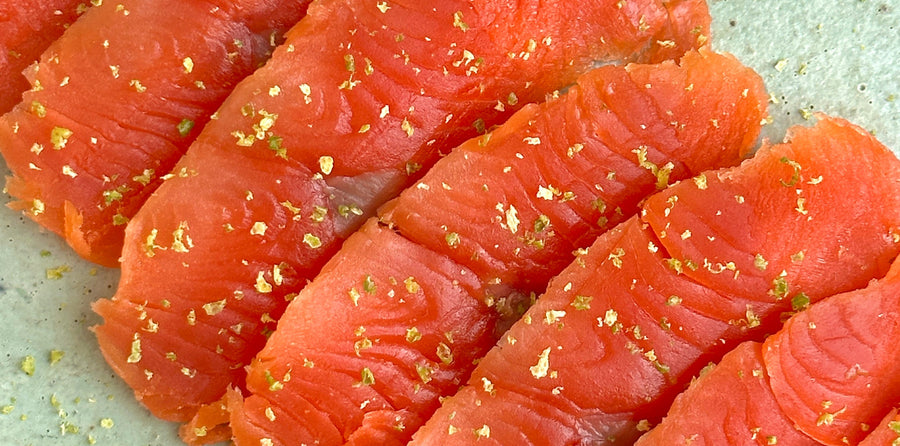
This recipe comes to us from our friend The Sardinfluencer Harrison Weinfeld. We tasked Harrison with coming up with a few recipes using the tail portions of our salmon and this gravlax recipe is a perfect use for any part of the salmon, but since this recipe requires no cooking, it is an especially good use of the tail portions because it seems that what people don't like about tail portions is that they are easier to overcook and overcooking fish gives an off flavor. Here there is no concern with overcooking in a gravlax. You will need a sharp knife, though!
Here's what Harrison has to say about the recipe...
The first time you make gravlax at home you will undoubtedly wonder why you waited so long. This us because it is both stupendously easy and almost entirely hands-off. It’s also a great way to use those tail fillet pieces (I prefer it), because the shape and thickness cut down on the curing time and are easier to slice off the skin. Here’s a recipe featuring fresh cilantro and bright, spicy pops of yuzu kosho. Please note that similar to ceviche, this dish is uncooked and is best avoided by high-risk populations and people who are pregnant.
INGREDIENTS
· 1 coho salmon tail piece (thawed under refrigeration)
· 2 tbs kosher salt
· 2 tbs white sugar
· 2 tbs cilantro
· 1 tsp yuzu kosho (can substitute zest of 3 limes)
· Lime zest for plating
METHOD
- Place the salt, sugar, cilantro, and yuzu kosho into a small food process and blend into a uniform rub, pushing down the sides as needed.
- Lay out a piece of cling wrap flat on your counter and gently press the rub into a thin, uniform layer, roughly the shape of the fillet piece you are working with.
- Pat your fish dry and lay it flesh side down on the curing blend, pressing it down gently. Fold the sides of the cling wrap up and over, making sure the rub is in contact with as much of the flesh as possible.
- Use more cling wrap to wrap the piece a second time and place it skin side down in a flat storage container with lid. Place in fridge and leave for about 36 hours.
- Remove the fillet from the fridge, unwrap it and rinse it under cold water, removing all of the rub. Pat it dry and place it on a cutting board.
- Using the sharpest knife you have, carefully slice pieces in half cm thickness starting from the tail tip (and working toward that direction), on a heavy bias, working your way up the fillet.
- Flip the pieces and plate to your liking. Top with lime zest and serve with your favorite fixings or fold into a simple pasta.




